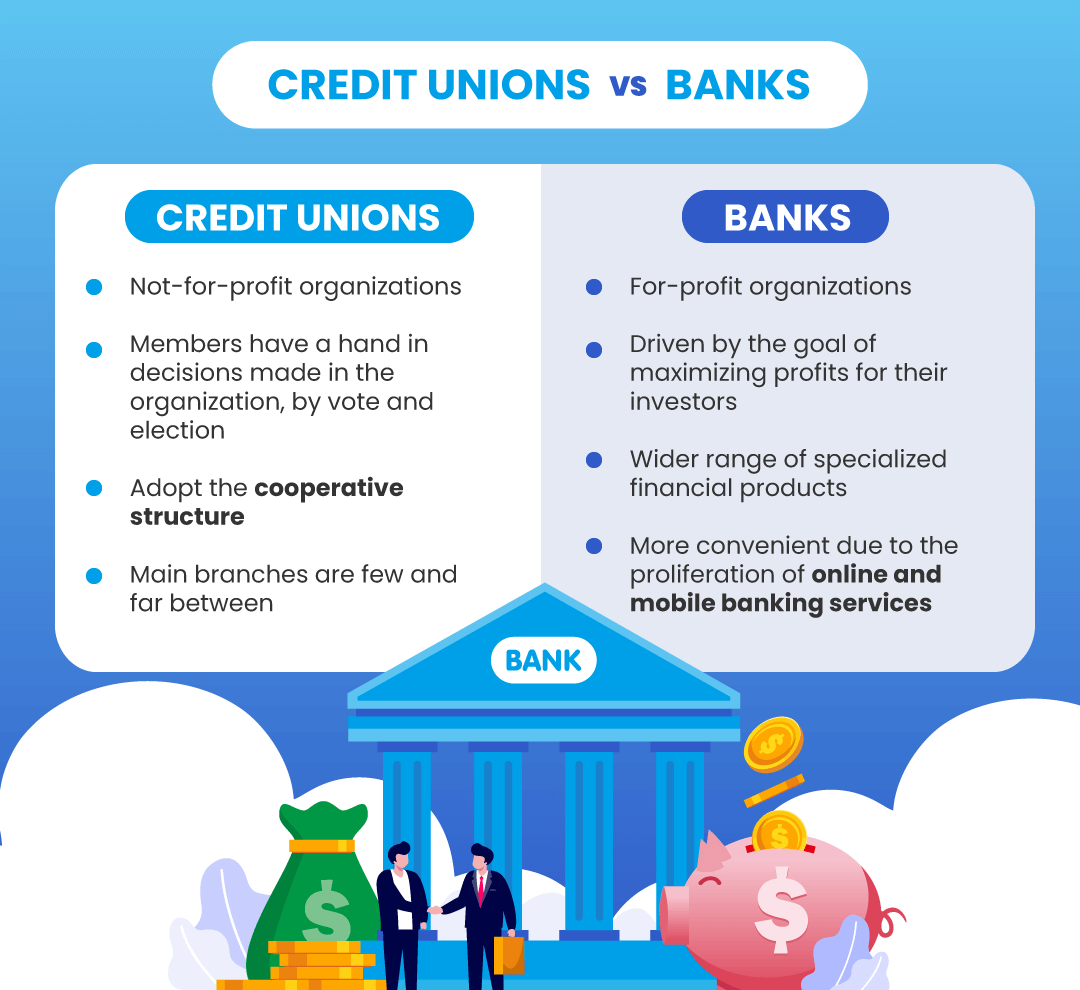Discover Top Credit Unions in Wyoming: Your Overview to Financial Services
Discover Top Credit Unions in Wyoming: Your Overview to Financial Services
Blog Article
The Ultimate Guide to Recognizing Lending Institution

Credit history unions stand as unique monetary entities, rooted in concepts of mutual support and member-driven procedures. As we browse via the intricacies of credit unions, an insightful journey waits for to lose light on these member-focused institutions and just how they differ from conventional banks.
What Are Credit Unions?
Lending institution are member-owned banks that offer a variety of banking services to their participants. Unlike standard banks, cooperative credit union run as not-for-profit companies, meaning their main focus gets on offering their participants as opposed to maximizing revenues. Members of a cooperative credit union typically share an usual bond, such as benefiting the same company, coming from the same neighborhood, or being component of the exact same organization.
Among the vital benefits of lending institution is that they often offer higher rates of interest on interest-bearing accounts and reduced rate of interest rates on finances contrasted to banks. Federal Credit Union. This is since lending institution are structured to profit their members straight, allowing them to hand down their earnings in the type of far better rates and less costs. Furthermore, cooperative credit union are recognized for their customized customer solution, as they prioritize developing connections with their participants to comprehend their one-of-a-kind monetary demands and objectives
History and Development of Cooperative Credit Union
The roots of member-owned economic cooperatives, known today as credit unions, trace back to a time when neighborhoods looked for options to typical banking organizations. The idea of credit score unions come from in the 19th century in Europe, with Friedrich Wilhelm Raiffeisen often attributed as the pioneer of the cooperative banking motion. Raiffeisen established the initial identified cooperative credit union in Germany in the mid-1800s, stressing area support and self-help principles.
The advancement of lending institution continued in The United States and Canada, where Alphonse Desjardins developed the initial credit scores union in Canada in 1900. Soon after, in 1909, the initial united state credit report union was created in New Hampshire by a group of Franco-American immigrants. These very early lending institution run on the fundamental concepts of common aid, democratic control, and member possession.
In time, lending institution have actually grown in appeal worldwide because of their not-for-profit framework, concentrate on serving members, and providing affordable financial product or services. Today, cooperative credit union play an essential duty in the economic market, providing easily accessible and community-oriented banking choices for individuals and businesses alike.

Membership and Eligibility Criteria
Membership at a credit report union is commonly restricted to individuals meeting certain qualification standards based upon the institution's starting principles and regulatory needs. These criteria usually include factors such as geographic place, employment standing, membership in certain companies, or affiliation with details teams. Credit history unions are recognized for their community-oriented method, which is reflected in their subscription demands. Federal Credit Union. As an example, some cooperative credit union may only serve people who live or function in a certain area, while others may be customized to employees of a specific firm or participants of a certain association.
Furthermore, cooperative credit union are structured as not-for-profit organizations, suggesting that their primary goal is to serve their participants instead than create revenues for shareholders. This emphasis on member solution often translates right into even more individualized focus, reduced costs, and affordable passion rates on car loans and savings accounts. By satisfying the eligibility standards and becoming a participant of a cooperative credit union, people can access a variety of financial items and services tailored to their certain needs.
Services and Products Supplied
One of the key facets that establishes credit unions apart is the varied array of financial services and products they use to their participants. Credit history unions commonly give conventional financial solutions such as savings and inspecting accounts, lendings, and credit cards.
Moreover, cooperative credit union frequently supply practical online and mobile banking alternatives for members to conveniently handle YOURURL.com their funds. They might provide advantages such as common branching, permitting members to access their accounts at various other cooperative credit union across the country. Some lending institution also give insurance policy items like life, home, and automobile insurance policy to assist participants safeguard their possessions and enjoyed ones.

Advantages of Banking With Credit Scores Unions
When thinking about banks, checking out the advantages of financial with lending institution exposes distinct benefits for participants looking for individualized solution and competitive prices. One significant benefit of cooperative credit union is their concentrate on individualized consumer service. Unlike large financial institutions, cooperative credit union are member-owned and focus on building strong relationships with their members. This suggests that credit union team usually have a deeper understanding of their participants' economic needs and can provide tailored options to assist them achieve their objectives. Additionally, cooperative credit union are recognized for using affordable rate of browse around this site interest on lendings and financial savings accounts. Since they are not-for-profit companies, lending institution can frequently offer lower car loan prices, higher savings prices, and lower fees contrasted to conventional banks. This can lead to substantial price financial savings for members gradually. On the whole, financial with a lending institution can supply a much more customized, cost-effective, and member-centric monetary experience.
Conclusion
To conclude, cooperative credit union attract attention as member-owned banks that focus on offering their members over making the most of profits. With beginnings going back to 19th century Europe, cooperative credit union adhere to principles of common aid and participant ownership. They supply a variety of financial services and products, consisting of standard banking services, financial investment choices, and affordable rate of interest. Membership eligibility criteria are details and reflect a community-oriented strategy, giving customized customer support and a member-centric economic experience.
Credit score unions are member-owned financial establishments that offer an array of financial services to their participants. The idea of credit score unions originated in the 19th century in Europe, with Friedrich Wilhelm Raiffeisen usually credited as the pioneer of the participating banking motion.The advancement of credit unions continued in North America, where Alphonse Desjardins developed the very first credit history union in Canada in 1900. Credit scores unions normally give conventional financial services such as cost savings and inspecting accounts, lendings, and credit score cards.When thinking about financial institutions, discovering the advantages of banking with credit report unions discloses unique advantages for members looking for individualized solution find more and competitive rates.
Report this page